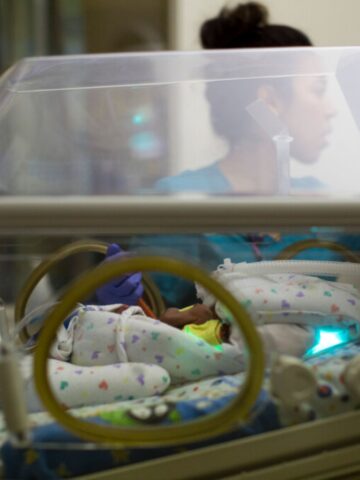Damian Hernandez was a 1-in-5.5-million newborn – now, at 7 months old, he’s even more unique.
“He’s a miracle,” says his mother, Ashley L. Valenzuela Recinos.
Damian was born with the extremely rare congenital condition of ectopia cordis – Latin for “out of place heart.”
Lacking the typical coverage of a breastbone, about 20 percent of Damian’s heart, covered only by a thin layer of a visceral membrane, protrudes outside his chest.
The survival rate of ectopia cordis is around 10 percent, with most instances of the condition resulting in a stillbirth. Most newborns who initially survive die within hours or days.
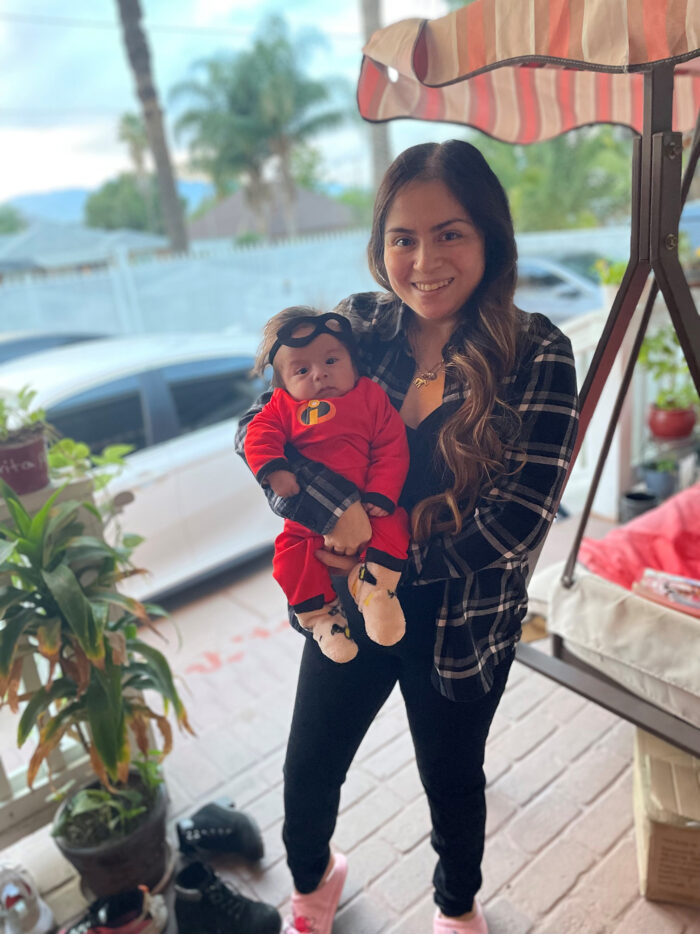
This July, around his first birthday, Damian is scheduled to undergo the first of several surgeries to correct his life-threatening condition, whose causes are unknown.
His remarkable medical journey is being managed by a multidisciplinary team of CHOC clinicians who collectively have seen only a handful of ectopia cordis patients in their careers.
“This story could already have been over in terms of the severity of the defect and potential outcome,” says Dr. Jennifer Jolley, the maternal-fetal medicine specialist who cared for Ashley during most of her pregnancy.
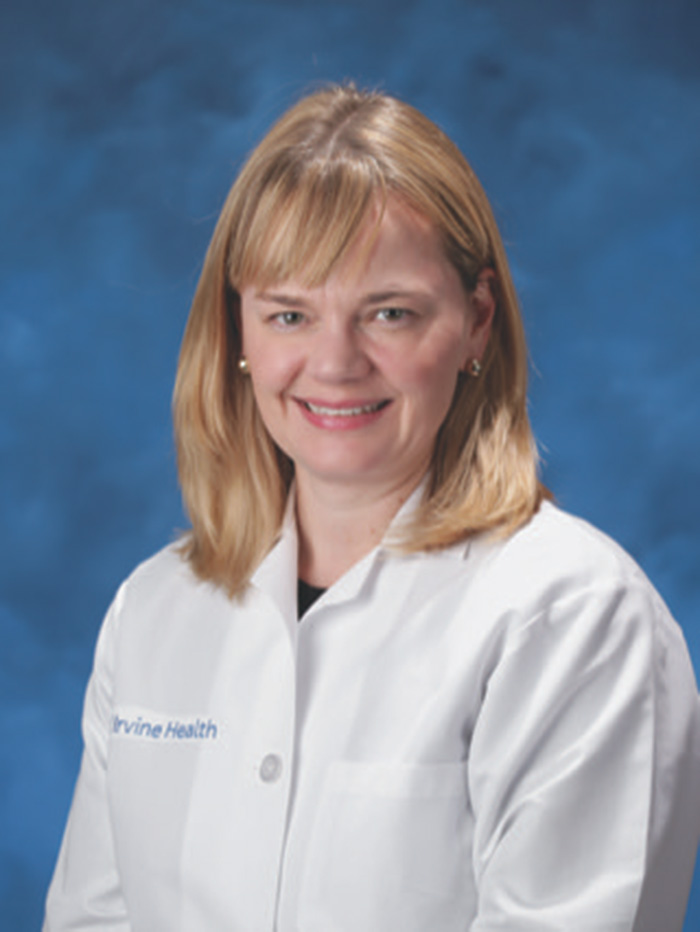
“The fact that Damian is home with his mom is remarkable,” adds Dr. Jolley, a maternal-fetal medicine physician with UCI Health who cares for patients in the Fetal Care Center of Southern California, a partnership between UCI Health and CHOC that opened in June 2021.
‘This can’t be happening,’ rare congenital heart condition
Ashley was 9 weeks pregnant when she experienced heavy bleeding.
“I was lying in bed watching TV and felt weird,” she recalls. “I thought, ‘This can’t be happening.’”
She was whisked to an ER and stayed overnight. Doctors first told her they could detect no heartbeat in her fetus.
Hours later, they said they heard one.
“I pretty much lost it,” Ashley says of the emotional roller-coaster.
A specialist advised her not to keep the baby because of the serious health issues he detected.
But she was determined to keep her unborn son.
At 19-weeks pregnant, Ashley was referred to Dr. Jolley, who diagnosed her fetus’ condition as Pentalogy of Cantrell, a version of ectopia cordis that is a collection of five congenital birth anomalies of the diaphragm, abdominal wall, pericardium, heart, and sternum.
There was no in-utero therapy for her baby, Dr. Jolley told her.
A team of CHOC neonatologists that specializes in high-risk births was ready when Damian was born July 13, 2022, at 36 weeks via Cesarean section.
“He didn’t require resuscitation or intubation or intensive care,” Dr. Jolley says. “He started crying and did what newborn babies do. And it happened to be that his heart was beating outside of his chest.
“It was a huge relief to Ashley when she heard him crying.”
Ectopia cordis causes ‘so many issues’
A newborn’s heart is the size of a large strawberry.
Damian’s was positioned unusually low in the upper abdominal wall.
“It almost looked like it was beating inside the umbilical cord,” says Dr. Amir Ashrafi, an expert in neonatology and neonatal-cardiac physiology who is part of the team treating Damian.
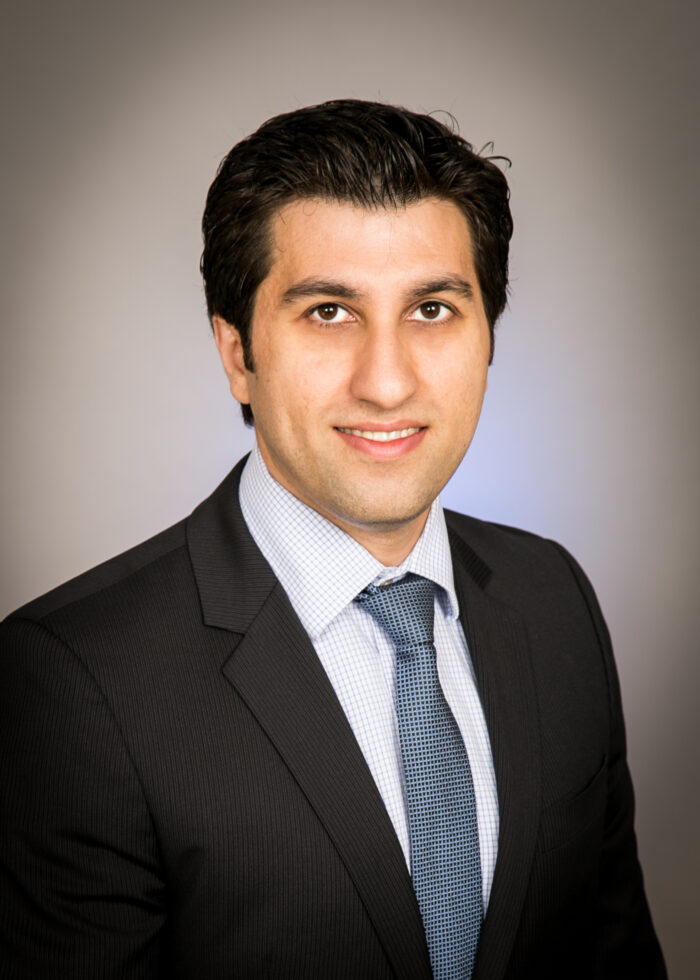
“The biggest thing to do in these cases is coordinate care,” adds Dr. Ashrafi, whose primary focus is caring for newborns with congenital heart disease. “There are so many issues – you have heart issues, diaphragm issues, lung issues, abdominal wall issues – so there are a number of different sub-specialists who need to get involved.”
One was pediatric cardiologist Dr. Wyman Lai.
“The path ahead has only been accomplished a couple of times that I know,” he says of Damian’s medical journey thus far.

Not only is Damian’s heart partially outside of the body, Dr. Lai says, but his blood vessels are abnormally positioned, and a part of his heart is incompletely developed.
Wait and see
Drs. Ashrafi and Lai joined other CHOC physicians in deciding how to treat Damian after he was born.
Because his heart had little protection from injury, it was imperative to move it into its proper place.
But the team agreed that since a thin membrane was covering the exposed portion of Damian’s heart, waiting for him to grow strong enough for surgery was the best course of action.
At one point, another specialist on Damian’s care team, pediatric surgeon Dr. Mustafa Kabeer, considered using the umbilical cord as a covering for his exposed heart – something he says has never been done before, but something he’s been researching for some time.
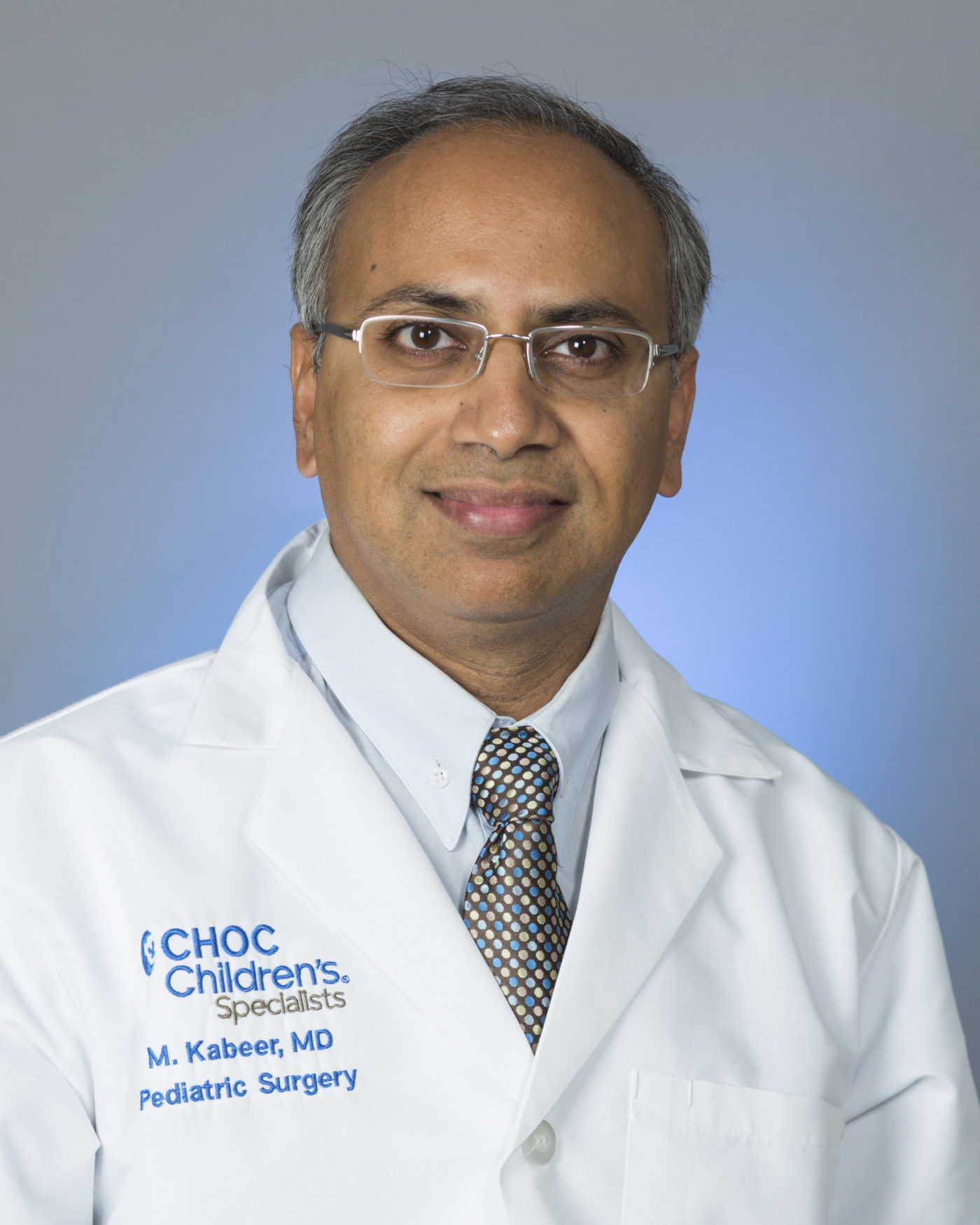
“I knew we had to think outside of the box,” Dr. Kabeer says. “Part of CHOC’s mission is to innovate with the latest technology. I was thinking of using the umbilical cord as a flap over the heart. It wouldn’t completely protect the heart, but it would prevent infection. But in this case, since there already was a covering, we didn’t need to do that.”
Adds Dr. Lai: “Sometimes, doing nothing is a hard thing to get people to agree to do.”
Pediatric surgeon Dr. Peter Yu, medical director of the Fetal Care Center of Southern California, helped lead Damian’s care team along with Dr. Kabeer.

“One of the hallmarks of an experienced surgeon like Mustafa Kabeer is having very astute surgical judgment and knowing when to operate,” Dr. Yu says. “Sometimes it’s more difficult knowing when not to operate. In this case, we agreed that exercising some restraint in the newborn period would be beneficial to this patient and give him the best chance for survival.”
3-D printed protective covering for exposed heart
To protect Damian’s exposed heart, the CHOC team fashioned a 3D-printed shell attached to Velcro straps.
He did well in the neonatal intensive care unit (NICU), where he stayed for four weeks, and went home without a surgical procedure – just the chest covering.
Damian’s first surgery in July 2023 will involve structural cardiac repair in addition to putting the heart back inside his chest.
Several more surgeries will follow as he ages.
“I think everyone is thrilled that he has a chance to do well,” Dr. Jolley says.
Says Dr. Ashrafi: “He’s not out of the woods, but we have every reason to be optimistic that he will do fine in the short and long term.”
Fetal Care team serves as partners on the journey
Damian sneezes.
Ashley smiles.
“I didn’t think he would be doing this well,” she says. “I was prepared for the worst to happen, and he’s just flying by his milestones.
Damian is Ashley’s first child.
“Dr. Jolley gave me the hope that I was looking for,” Ashley recalls of her first visit with the obstetrician. “She said, ‘Don’t worry, we’re going to take care of you, this baby is going to come out perfect.’ She just told me everything I wanted to hear.”
In mid-December 2022, Damian had a cardiac catheterization to prepare for his first heart surgery.
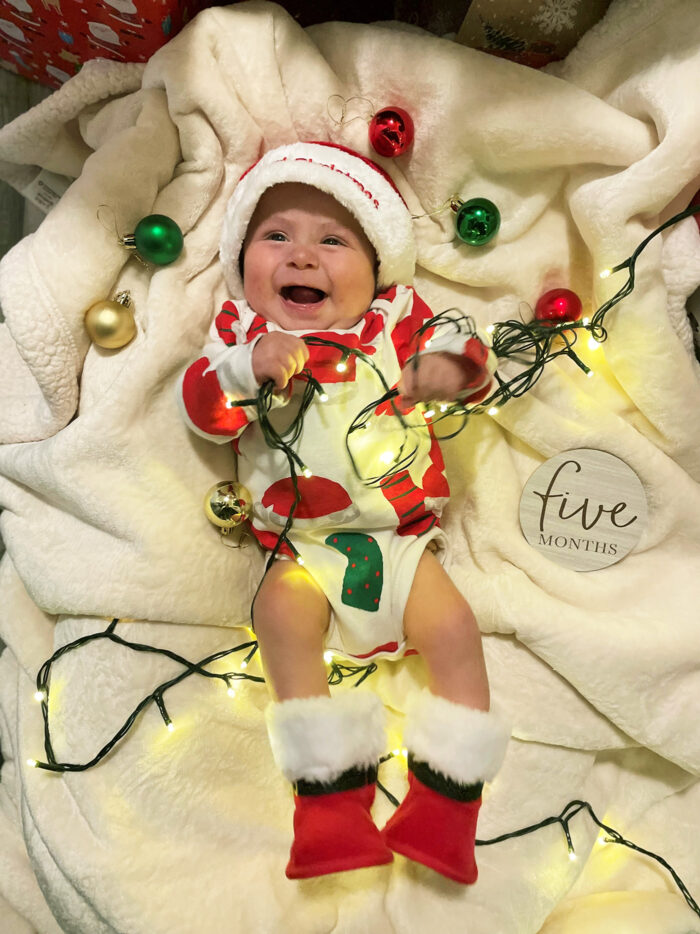
For now, it’s time for Ashley to enjoy her son as he grows bigger and stronger for the surgeries ahead.
Damian sneezes again.
“Bless you,” Ashley says.
Dr. Yu says Damian’s team at CHOC had several meetings planning for his birth and neonatal care to give him the best chance of survival.
“And I think that’s really the strength of our fetal program,” Dr. Yu says. “We’re here to support families who are faced with diagnoses that are rarely seen. We have the experts to be able to take care of all organ systems, whether it’s a heart or a brain or a spine or a kidney or anything else.
“Our team has done an exceptional job taking care of this extremely unique, extremely critical, extremely severe diagnosis. We want families to know we’re with them every step of the way no matter what.”
Ashley says she appreciates every doctor and nurse who is taking care of Damian.
“Without them,” she says, “I wouldn’t have the strength I do to this every day. They’re all amazing.”
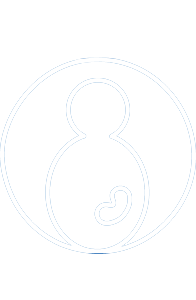
Learn more about the Fetal Care Center of Southern California
As a partnership between UCI Health and CHOC, The Fetal Care Center of Southern California brings together experts in maternal-fetal medicine and pediatrics, so both mom and baby are cared for — no matter the diagnosis.



